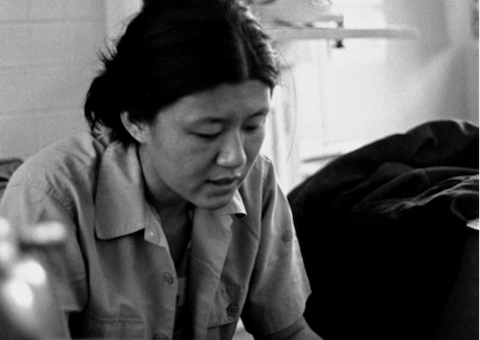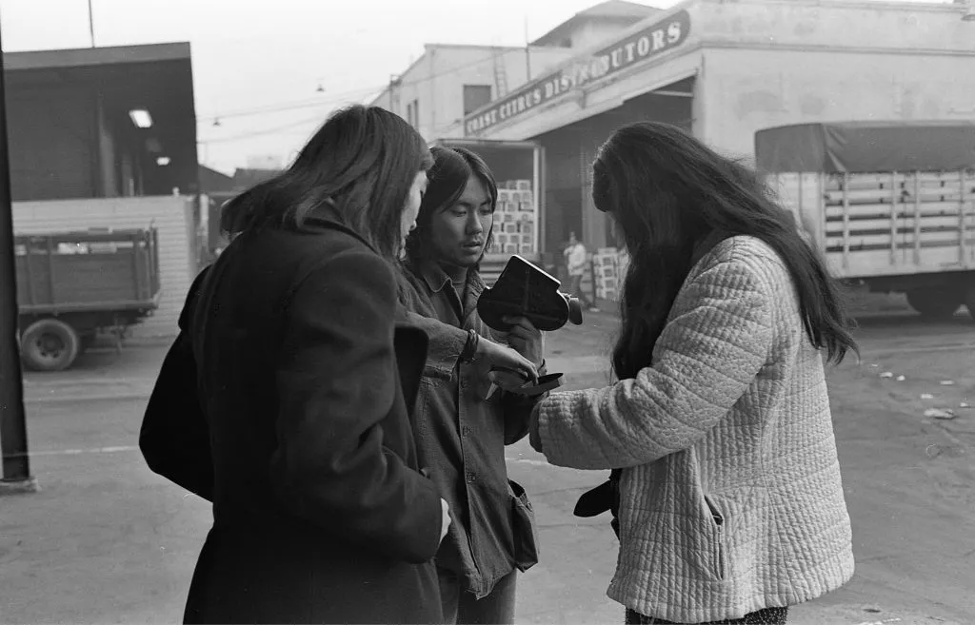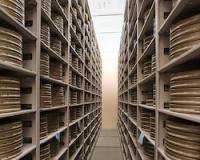
Betty Chen
Our guest writer is Josslyn Jeanine Luckett, an Assistant Professor in the Department of Cinema Studies at NYU. Her first book, Toward a More Perfect Rebellion: Multiracial Media Activism Made in L.A. (under contract UC Press) centers the formation of the Ethno-Communications Program at UCLA (1969-1973), an affirmative action media training initiative whose participants transformed American film culture of the 1970s and beyond. She is a contributing editor for Film Quarterly and a member of the National Film Preservation Board of the Library of Congress. She is also a screenwriter and recently joined the writing staff of Queen Sugar (OWN) for its seventh and final season.
In the spring of 2022, UCLA-trained filmmaker Betty Yao-Jung Chen (November 5, 1943–April 26, 2022) died in Florida. The news was confirmed by her niece and nephew, who had reached out to me in 2021 after reading an article I’d written about their aunt for Film Quarterly’s March 2020 dossier, “Asian American Film at Fifty.” What a crushing discovery. And yet, as painful as it is, much more has emerged about this extraordinarily gifted artist and filmmaker since her death, as friends and colleagues have shared remembrances (some collected here by Visual Communications co-founder Eddie Wong) and rare collaborations of hers (such as Gaman… To Endure with Nobuko Miyamoto) have become available. Now, with the permission of her family, two of her UCLA student films from the 1970s, Rainbow Car Wash and Portraits of a Young Girl, are streaming for the first time via the UCLA Film & Television Archive.

Betty Chen (right) teaching Duane Kubo and Eddie Wong how to load an Arriflex 16 camera. Visual Communications photo shoot at the LA Produce Market in 1971. Photo by Robert Nakamura, courtesy of VC Archives.
Betty Chin/Betty Chen?
In the earliest work I’d read about UCLA film school’s pilot affirmative action initiative, the Ethno-Communications Program (1969-1973), this woman’s name would often appear — not always spelled the same way but always surrounded by a crowd of male names. Who was she? Luckily, the UCLA Film & Television Archive had copies of two of her student films, which revealed the full and proper spelling of her name, Betty Yao-Jung Chen, and more importantly the vibrant, political and playful vision of this artist. When I first screened Portraits of a Young Girl, I gasped (and still do no matter how many times I watch it). I was not expecting what looked like a sketching exercise of a budding animator to deliver such an unexpected political punch. I then felt frustrated that I could not easily learn more about the creator of such a powerful statement. I started to ask around and found that Chen had been the teacher/T.A. to Ethno-Communications students and Visual Communications co-founders Eddie Wong, Duane Kubo and Robert Nakamura, who has been lovingly and reverently dubbed the Godfather of Asian American media. Betty Chen taught the Godfather?! But who was she and where was she? Classmates and collaborators from Sylvia Morales and Mary Uyematsu Kao, to Nobuko Miyamoto and the late Carroll Parrott Blue all tried to help me find her, offering the last known address or phone number they’d had after she moved to Florida to take care of aging parents, but no luck.

Betty Chen recording a narration for Mary Uyematsu Kao's student film on women of the Asian American movement.
Photo by Mary Uyematsu Kao.
I was amazed also to see how many different kinds of collaborators and projects she worked on, from Judith Dancoff’s radical feminist art collective chronicle, Judy Chicago and the California Girls (1971), to Bob and Nobuko Miyamoto’s tender animated project about a Japanese American girl growing up in a concentration camp, Gaman… To Endure (1982 and remixed in 2022), and she’s also listed as a camera operator on Yolande du Luart’s Angela Davis: Portrait of a Revolutionary (1971). Her own student projects — one political animation (Portraits of a Young Girl) and one deliciously unruly live action opera/disco/rock and roll fantasy (Rainbow Car Wash) starring a Pepto Bismol-pink classic DeSoto (circa late ’40s) and featuring an on-camera dance solo performed by the director herself! — provide us now with glimpses of a portrait of a young artist daring to claim her freedom to play with form even in the midst of campus assassinations and the invasion of Cambodia.
Watch Portraits of a Young Girl (1970s):
We (my comrades at the UCLA Film & Television Archive, Mark Quigley and Maya Montañez Smukler) wish we knew a bit more about the production dates for these two projects. We discerned from the sense of immediacy in Portraits of a Young Girl that Chen may have made this film as a direct response to the shooting deaths of four students at Kent State University by Ohio National Guardsmen in May of 1970. Because of this, we initially assumed that the longer live action experimental work, Rainbow Car Wash, was made later. The ensemble dance sequence toward the end, set to a popular rock tune of the late 1960s, conjures similar group dancing from later ’70s films, when line dances like “the hustle” were popular (think “Night Fever” sequence in Saturday Night Fever, 1977). The central dancing couple’s androgynous, disco-era fashion (neck tie and suspenders for her, pink sequins and fringe for him) also places them visually in a later ’70s moment. Yet, earlier in Rainbow, we see footage of a tribute to Busby Berkeley that after some digging I discovered took place in February of 1970, when two of the legendary director’s musicals, Gold Diggers of 1935 (1935) and Footlight Parade (1933) were rereleased and screened at the Lido Theater in Los Angeles. So, she was at least “in production” on Rainbow prior to the completion of Portraits. These dates are still imprecise, but they root my speculation that Chen was in the throes of a fanciful experiment in early 1970, creating her own “rainbow” musical, when her playfulness was unavoidably interrupted by the chaos of the U.S. invasion of Cambodia, which sent huge swathes of UCLA students (and students all over the country) on strike. Perhaps she stopped everything to paint an animated portrait in tribute to a young artist and honor student Allison Krause, whose budding activism resonated with Chen’s own.
Watch Rainbow Car Wash (1970s):
1970 is also when Chen would begin to impact a generation of incoming Asian American film students at UCLA — including Jeff Furumura, Mary Uyematsu Kao, as well as Wong, Kubo and Nakamura — in her role as a graduate teaching assistant for the recently launched Ethno-Communications Program (her fellow Ethno T.A.s included Charles Burnett, who she thanks in the credits for Rainbow Car Wash, and David Garcia). This leads me to wonder when she decided to place herself in her musical. Every member of the adventurous ensemble of performers featured in Rainbow Car Wash appears to be white or white-presenting, until one kimono-clad woman with long, flowing brown hair breaks out into a rapturous solo dance in the woods: the “effervescent hibiscus” played by Betty Yao-Jung Chen herself. This move to insert herself — what inspired it and when in the production did it take place? Was the choice impacted by her increased involvement in the Asian American movement and the formative days of Visual Communications (VC), whose goal was to produce honest, accurate and empowering media portrayals of Asian American people? Here’s hoping the release of these two projects here will inspire new rounds of research and provide an opportunity for former colleagues/collaborators of Chen’s to come forth and share many more details about this critically important artist and her lamentably overlooked contributions to Asian American media of the 1970s.
Special thanks to the UCLA Film & Television Archive Digital Lab. Edited by Jennifer Rhee, Digital Content Manager.
< Back to the Archive Blog






 Mobile Navigation
Mobile Navigation

